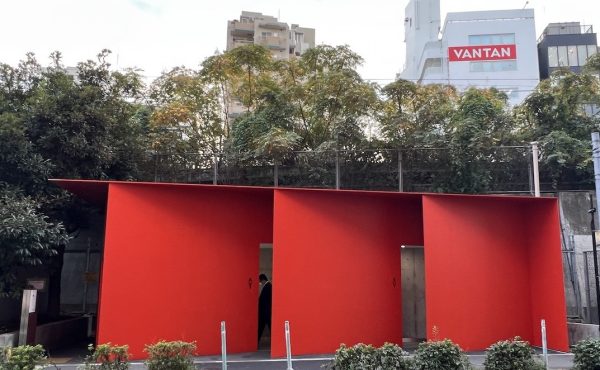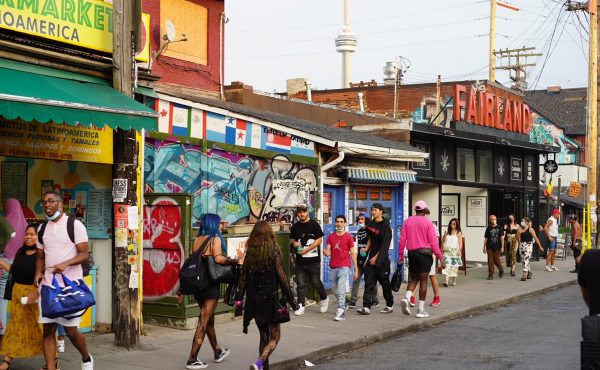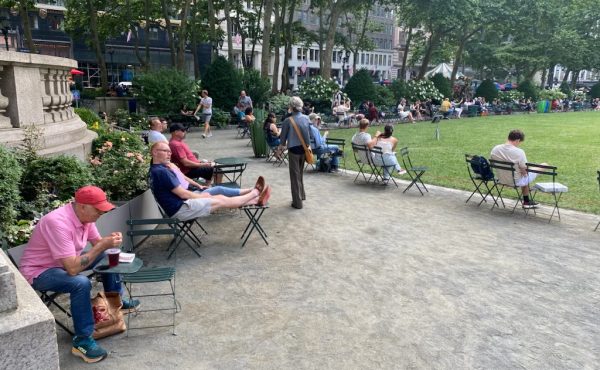
This is a crucial passage for Toronto, one that will call upon all of our collective ingenuity and reserves of good will to get beyond the debilitating and unhelpful myth that we are somehow stymied as a divided and ungovernable city.
Much of this is expressed in terms of a presumed urban/suburban fault line as if these were fixed categories with defined borders. The mistake that we make is a failure to grasp the fourth dimension, the play of time; as if what we see now is an immutable end state. All urban places (city and suburb) are perpetually unfinished and go through waves of change and as layers accumulate. In the coming decades, we will get denser, more diverse and less car dependent in all our parts. The exagerated overemphasis on accommodating the private automobile as the major form of movement in cities across North America both has now been acknowledged but it is not irredeemable and we too will modify as we invest in transit, and make a shift to active transportation, walking and cycling.
Polarization around this inevitable and desirable process of transformation, exaggerating differences, describing areas of our city in mutually exclusive terms, creating and fostering a ‘them and us’ for the purposes of wedge politics is all too easy. It rallies a ‘base’ and appeals to our tribal instincts. Like caricatures of east/west difference and ethnic and religious divides it can be used to demonize opponents and delegitimize and vilify the ‘other’. The media unfortunately relishes controversy and all too eagerly jumps on this bandwagon, sometimes even conjuring up and promoting this sense of division with leading questions and provocative taunts.
In the end, however, it is destructive and unhelpful when describing our city. It gives rise to false dichotomies and distorts our collective understanding of the real challenges that need thoughtful responses. It gets in the way of problem solving and the kind of lateral thinking that thrives on creative tension and respectful disagreements. We freeze up and lose our ability to see the bigger picture and appreciate the commonalities that bind us together in the evolving urban space we share.
That dysfunctional description does not really fit who we are in Toronto but the mythological characterization of a city divided against itself has unfortunately taken hold in many quarters. It is being perpetuated daily in the press and risks becoming a self-fulfilling prophecy if we don’t challenge it. To get over this hump we need good listeners not dogmatic shouters, generous empathetic leaders not mean-spirited ones, healers that bring us together across the perceived divides not demagogues that drive wedges and poke the sores. The city, the big city, is not a zero sum game. We need to get beyond the culture of winners and losers, of gloating triumphalism and resentful victimhood.
Where are the voices who will speak firmly and confidently for us all?




10 comments
David Crombie made a similar point at a Jane Jacobs panel of four former Toronto mayors a year ago. The Annex Residents’ Association subsequently sought to ‘twin’ with an RA in the suburbs to see how we might address similar/same issues. The Don Mills Residents’ Inc. saw merit in this idea; ARA and DMRI agreed to ‘twin’ earlier this year. Aside from occasionally participating in our twin’s Board meetings, we agreed in September to work together in the coming months on metropolitan transportation issues, including preparing joint positions on the City’s transportation financing options dialogue and Civic Action’s “What Would You Do With 32?” campaign as ‘local champions’. It is quite heartening to see the enthusiasm with which both associations are together approaching some common metropolitan problems. At the grass roots level, Toronto’s bifurcation of city and suburb is clearly a myth.
Dave Meslin for interim mayor.
The car-centric suburbs have been dominating Caronto for many years, and we’ve backslid with Mr. Ford. Yes, the entire area is built up, and boundaries do not seem so apparent on street-level, but the suburban politicians tend to nix bike lanes in the core, just because they can. Not that the core group of politicians do the right things either of course – but the collective approach to biking now equals removing urban bike lanes and spending umpteen millions in parks – so I’m in favour of de-amanglemating (with some broader ability to attempt to deal with transport, not that suburbanites will admit cars are well subsidized)
Hamish> equating an anti-cycling mayor with the suburbs – you’re feeding this divide. Stop doing that. You are the problem.
@Hamish I’ve seen a lot of new bike lanes in York Region over the last few years. Perhaps it isn’t the “suburbs” which are the problem, but incompetent and ideologically driven politicians.
York Region is definitely building bike lanes, but it’s building them along new roads through nowhere along which they’re building big box stores. Not the plan, but perhaps not as bad as the same plan minus the bike lanes..
I’d argue that the voice that will speak for us all is our united voice from the bottom up. It is not enough for a single leader to speak of bringing the suburbs and downtown together. Instead, at a grassroots level, we each have to find opportunities to make our voice heard. For example, when I led a Jane’s Walk this May in New Toronto (my neighbourhood in Etobicoke), one of the participants asked me if I consider my neighbourhood suburban. I told him that while a map may make New Toronto appear suburban, it is not. It has several public transit routes, mixed use development, diversity of socioeconomic classes, and multiple community resources. There are almost no big box stores and you don’t need a car to get around.
It also has more bike routes than downtown, even with a right wing Fordite councillor in power.
@EDWARD LEMAN, in case you come by again, just want to say that that’s a great initiative!
The problem, at its core, is not amalgamation, but how amalgamation was implemented. Instead of turning back the clock, why don’t we start looking forward on ways to improve our governance and idea of city so that the connections are highlighted, not the differences?
A mayoral candidate that works towards these goals gets my vote.
Umm. Writing intelligently will get you nowhere.